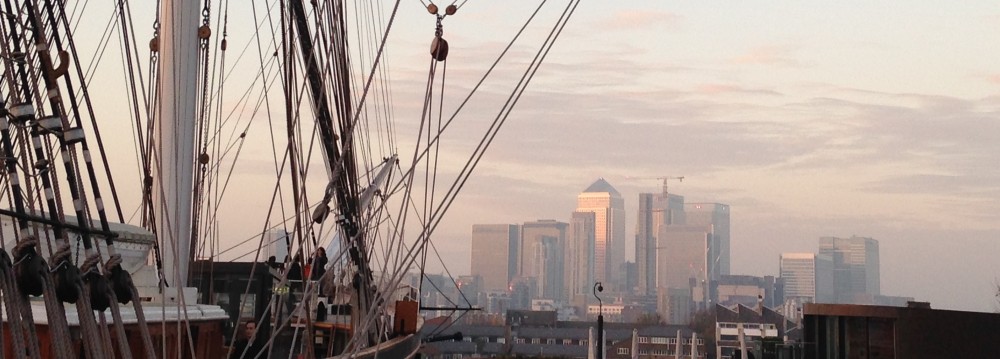Champagne tour
Champagne is a glorious place, even in lousy weather. It has class. Not the pretentious kind, but rather a classiness that comes from attainment of quality and competence in wine-making and cuisine. The region can take on rustic and down-to-earth airs. But, it can also manifest excellence in presentation, for example in serving a fine meal based largely on local supplies. There is a sense of history and tradition, though this contrasts sometimes with the innovation and technological progress that are also in evidence (where appropriate). The scenery is bucolic and lush. And, of course, there is champagne!
The Aube and Points North
When folks think of Champagne they tend to think first of Reims and Epernay, with the splendid mountain between them surrounded by vineyards, with a branch stretching south to Vertus. But, there is another stretch of authentic Champagne vineyards further south, in the Aube region around Troyes. Long producing champagne-style wines and supplying grapes to the big name houses in Reims and Epernay, the Aube region was officially recognized as being part of the Champagne district in the early 1900s (after a series of revolts known as the Champagne Riots).
Troyes is the main town in the Aube region, as well as the historical capital of Champagne. Already settled in Roman times, Troyes has long been surrounded by wine production. While much of the city was destroyed by various fires in the Middle Ages, there are quite a few half-timbered houses and churches remaining from the 1500s. Looking at a map of the old town, one may notice that it is appropriately shaped like a cork.
The town has had a difficult history with various wars and social upheavals leading to troubles. Attila the Hun was stopped outside of town by a combination of force and compensation. The Jewish population, once thriving (e.g., the famous scholar Rashi established a center there for Talmudic studies in 1070AD), was abused and expelled in Medieval times. In later centuries, a Jewish population was reestablished but then fell victim to terrible oppression during WWII (see photo of the memorial below). After WWII a new synagogue was established in some Medieval buildings in the old town.
The vineyards of Montgueux spread across a small enclave to the west of Troyes, producing chardonnay grapes. The area is recognized on official maps showing designated zones for Champagne production. Montgueux is a small island of production at some distance from the next officially recognized zones.
Heading north from Troyes one comes to the southern area of the Reims-Epernay champagne district. There is a wonderful chateau in the village of Etoges. It is now a bed and breakfast. A fine dinner can be had at the chateau, served with style in the former orangerie.
From Etoges, the Champagne route can be followed through the hills and vineyards to the town of Vertus, which is home to a number of champagne houses. Heavily damaged over the centuries, Vertus still has a number of remarkable old buildings and some nice parks well-suited for picnics, all set in the ambiance of a successful champagne-producing town. Heading north toward Epernay, the road hugs the cote des blancs district with famous wine towns such as Oger, Avize and Cramant.
Onward to Epernay and the Marne
Epernay is a wonderful town, home to some of the finest champagne houses, many of which are located along Champagne Avenue. Smaller and calmer than Reims, Epernay still radiates class. Many of the producers offer tours of their cellars and tastings, which can make for a very pleasant morning or afternoon, especially when paired with a fine meal at a local establishment.
The Marne River flows along the northern reaches of Epernay and its valley is home to some spectacular vineyards including a number of grand cru and premier cru areas (i.e., top-notch). The abbey in Hautvillers was home to the famous cleric Dom Perignon, who is sometimes considered the legendary father of champagne wines. While that has been challenged, he did in reality develop improved techniques for wine production, making a contribution that is still worthy of praise. We paid hommage to him at the former abbey church.
The vineyards skirting the hillsides to the north of the Marne are some of the best. From Cumieres to Ay to Mutigny one sees famous vintner names inscribed on low stone markers on the edges of their acreage along the roadside. In springtime, the countryside is verdant with forest land and crop fields bordering the vineyards. This week the vines were beginning to bud, a bit later than usual.
Really? Heading back to Paris so soon?
Heading west from Mutigny, we drove along the Marne through beautiful countryside. Flowering trees added splashes of color in the forests, as did the various orchard trees in farms and gardens along the river. The various species of early-leafing trees and plants displayed many contrasting shades of green, making the scenery look like an expressionist painting.
Finally, as we passed through Chatillon-sur-Marne, we knew our Champagne meandering time was coming to the end. As we headed toward the highway home, a statue of Pope Urbain II loomed above us pointing the way and perhaps raising the question as to why anyone would be heading back to the metropolis after such a short visit.
Photo Galleries
Use the arrows at the bottom of each gallery to scroll up or down. Double click to expand a picture. If the galleries do not display, then click on this link: http://wp.me/p2sfPf-mO .
1) From Troyes to Etoges
[flagallery gid=19 name=Gallery]
..
2) From Epernay along the Marne
[flagallery gid=20 name=Gallery]
(Copyright: Doug, 2013)

